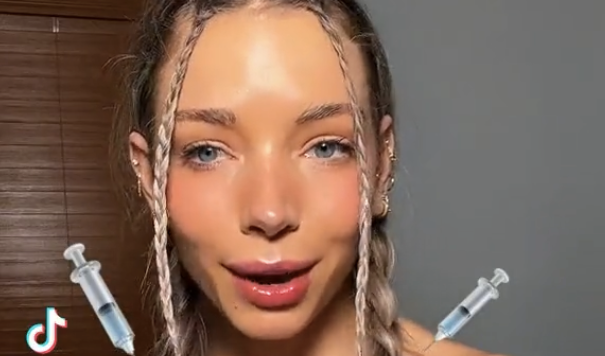A strange thing has happened since I turned 30 this year: I’m receiving adverts for Botox and fillers. Everywhere. My social media pages are bursting with before-and-after photos of poreless skin, over-plumped lips, chiselled cheekbones, arched eyebrows, buccal fat removal, the same endless cat-eyed, concave-contoured “Instagram Faces“ in which everything goes “up” instead of the natural “down”. I even saw a video on TikTok this week telling me how Botox can be injected into the shoulders to make a person’s frame look smaller in photos, as if women needed something else to worry about.
Despite its ubiquity — an estimated 900,000 Botox injections are carried out in the UK each year — the aesthetic injectables industry is woefully under-regulated. A new study found that more than two-thirds of cosmetic practitioners who administer injections are not qualified medical doctors, but the truth is that just about anyone can inject filler. There are no national minimum standards for practitioner training or regulated qualifications, meaning people can find Botox through hair salons, beauty apps, or Snapchat stories. We have no idea how many people actually have fillers — it’s estimated at around 4.3 million each year — nor do we know their age (although it is now illegal to treat anyone under the age of 18).
There are, of course, risks: pain, headaches, swelling, bruising, infection, partial face paralysis, disfigurement. Yet despite the horror stories of drooping eyelids and half-frozen faces, demand for injectable “tweakments” continues to skyrocket, with more and more people in their twenties opting for “prejuventation” treatments or “Baby Botox“ as a preventative procedure. Twenty years ago, plastic surgery was perceived as a dramatic intervention. It was expensive, permanent and invasive, often involving an uncomfortable recovery period of bloody bandages and black eyes. Now, many young people see fillers as comparable to getting a haircut or manicure, just another example of “self-care”.
This cognitive reframing — that injectables are not about vanity, but some kind of self-vindication — is risible. Young people, made vulnerable by years of experiencing life through an ultra-filtered lens where a click of a button can give you the perfect nose or fox eyes or jawline, are being told to “do what makes them happy” by the very forces that make them profoundly insecure and unhappy in the first place. If people are constantly told that natural is not normal, that silicone is now a status symbol, that for a couple of hundred pounds you can look like Kylie Jenner (the face that launched a thousand lip fillers), then of course they will be tempted by the dopamine rush and the promise of eternal youth.
The problem is, once that journey starts, it’s very difficult to stop. Botox and fillers are cleared from the body within three to six months, and so customers have to keep coming back to maintain their smoothed-over skin and flawless features. It’s the perfect gateway drug. As a teacher, I desperately want to tell my students to avoid this capitalist doom cycle, but when apps like “Princess Plastic Surgery” and “Little Skin Doctor” are marketed to them from primary-school age, they hardly stand a chance. When I was growing up in the Dark Ages of the early 2000s, editing photos involved an expensive Photoshop licence, some training, and hours of amateur airbrushing; nowadays, anyone can transform their appearance in seconds. The pipeline of follow, filter, filler is irresistible.
It’s interesting that as a society we promote cosmetic interventions as aspirational, parading Love Islanders who are unrecognisable from the features with which they are born, while simultaneously decrying gender-affirming surgery as “mutilation”. Of course the latter is a lot more extreme, invasive and lasting, but both are ultimately the result of body image dissatisfaction and dysphoria: the idea that if we change ourselves on the outside, we will feel better about ourselves on the inside. It is a cosmetic solution to a psychological problem. The difference is that gender-affirming care is, rightly, heavily regulated, with strict guidelines and thresholds. The injectables industry, regrettably, is not.











Join the discussion
Join like minded readers that support our journalism by becoming a paid subscriber
To join the discussion in the comments, become a paid subscriber.
Join like minded readers that support our journalism, read unlimited articles and enjoy other subscriber-only benefits.
Subscribe